Last week I enjoyed a visit to Dudley in the West Midlands to judge two local authority public open spaces on behalf of the Green Flag awards scheme.
Each year I am invited to judge several parks, however due to the Covid-19 pandemic, this year’s judging was scaled down to comply with local restrictions. Therefore, it was nice to finally get out to meet the relevant parks managers and staff who maintain these two sites.
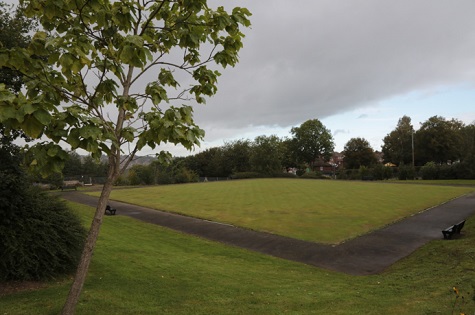
First up was Huntingtree Park, a small public park situated in Halesowen. The park occupies about 9 acres of land between Huntingtree Road and Thornhill Road opposite Huntingtree Primary School. There are a variety of deciduous trees around the perimeter of the park and a small urban forest at the corner of Thornhill Road and Huntingtree Road.
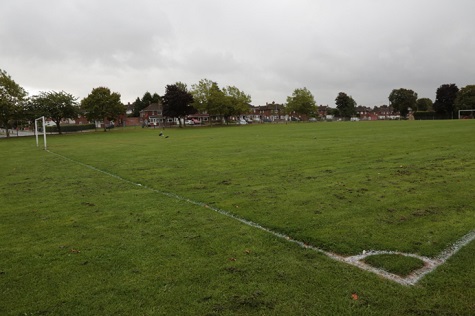
The park has a fullsize football pitch, bowling green, hardstanding tennis court, mutigames area and childrens’ paly area. All supported by some onsite facilities, that include public toilets, changing rooms and community rooms.
The park has an active friends group that has been in existence since 2006 and been instrumental in coordinating raising funds to replace seats and litter bins and improve areas of the park.
This year the council have secured funds to have the football pitch renovated (vertidrained, overseeded and topdressed) for the first time in a number of years.
The second site was Saltwells Nature Reserve, a truly interesting site that provides a fascinating look into the industrial past that created the black country as we know it today.
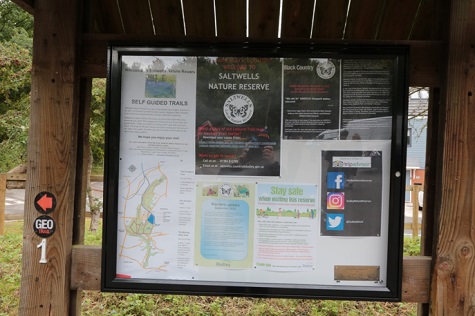
We were met on site by four key members of staff, Alan Preece, senior warden, Graham Worton, keeper of geology, Dudley MBC, Cllr Karen Shakespeare, cabinet member for public realm, Dudley MB and Les Drinkwater, Friends of Saltwells, volunteer and local geologist. Also working on site was two members of Alan’s team, Tom Weaver (warden ) and Emma Woolley, (assistant warden).
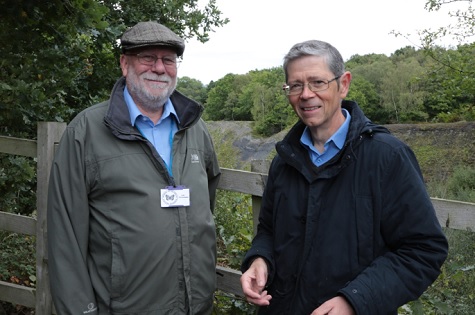
Les Drinkwater and Graham Worton
We began our tour of the site at the main entrance, where a new warden’s accommodation and education centre was being built and scheduled to be open December 2020. Graham Worton gave us an enthusiastic introduction to the historic importance of this site and how the geology played such an important role in the creation of the industrial revolution of the area locally known as the Black Country during the late 19th century. He told us that there were over 1500 coal mines in a 70 mile radius of the area at the height of the coal mining period. Mainly due to the coal seams being close to the surface.
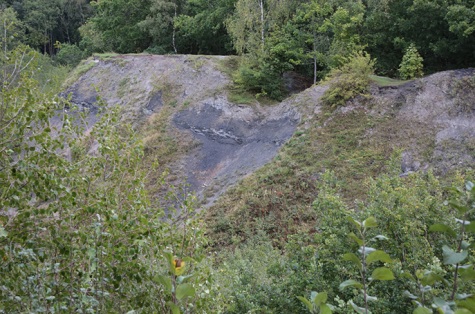
Coal seam that can be seen at Saltwells Nature Reserve
In fact, Saltwells Nature reserve is only one of a handful of sites where you can still see the existing coal seam in the sub strata of the site.
He also explained how these layers of the middle coal measures were deposited in the upper carboniferous period about 310 million years ago. They comprise of over 30m of shales and sandstones which were deposited when the area was covered by a low-lying swamp.
Many parts of the reserve have been mined for coal including Saltwells Wood and Netherton Hill. Early bell pits were created within the west of Saltwells Wood which now are designated as a scheduled ancient monument. The last coal mining on site ceased in the Netherton Hill area in the 1960s.
The rest of the site comprises of a woodland walk with several central paths running around and through the wooded areas. A number of sculptures and wood carvings have been installed along these paths to depict past activities of the area.

We then heard how Alan Preece, the senior warden, managed the site with his two members of staff and how they control weed growth and maintain the habitat of the site. Over 20,000 people visit the site each year, and once the new nature centre has been built there will be an annual programme of school visits planned.
In all, it was a very enjoyable day judging these two sites. Also it was good to hear the council officers stating that the Covid-19 pandemic had changed people’s attitudes towards the use of the facilities – they now tended to respect and value them more.
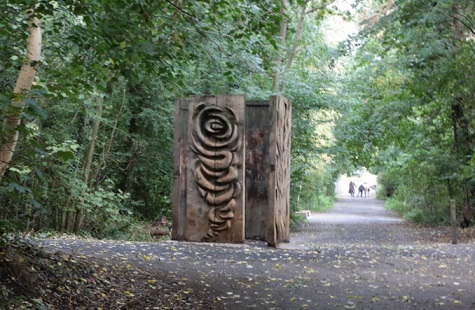
Parks
While on the subject of local authority parks and public open spaces, Paul Rabbits of the Parks Management Forum has offered his opinion on the current state of parks.
Paul says, “We used to have a Parks Minister - the last one I think was Rishi Sunak MP, but we don't even have that anymore. Funding has gone to arts, sports and heritage yet the one sector that touches on the majority of people's lives - green space - has been largely ignored.
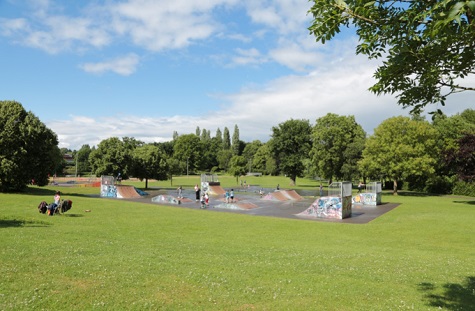
“Decades of cuts have seen these services decimated, with over 27,000 parks and green spaces across the UK, with 80% managed by local authorities. Work has been done to look at alternative models of management and funding, and in cases there are examples of best practice, but the one model that has worked since the inception of parks, is that where they are managed by local councils, accountable to local people.
Good parks are vote winners, people love their parks and the pandemic has shown this with the hordes that have spilled out into them and sadly the mess that was left by a minority.”
If you visit the Parks Management Forum's website you can read regular updates from Paul.
Sports roundup
As for other news this week, plans for fans to return to watch live sport has been delayed It seems likely fans will not be able to see any football matches live until the new year. This no doubt will cause more misery particularly at lower level clubs where they rely on gate receipts to keep running.

I also came across some drone footage of the Leicester City’s new training ground which is nearing completion. Like most Premiership clubs, the investment in their training grounds is exceptional, However, John Ledwidge and his team of groundstaff are excited about the challenges ahead especially managing, what is a unique new model for training grounds with the completion of a nine hole golf course.
I also read in Golf Business magazine that at a number of golf clubs had recently been put up for sale, include a string of DeVere Golf venues.
However, golf is the one sport that seems to be holding its own, especially with many clubs stating that golf memberships are still on the increase.

As mentioned last week, many cricket grounds have finally finished their short but productive cricket season. Many are now turning their attention to conducting end of season renovations. Durham CCC recently posted a video of their head groundsman Vic Domain, discussing how the season had panned out for him and his team.
As for schools, the school calendar is on the change with many schools now moving from summer sports to winter sports, with emphasis on changing over the pitches to host winter games sports.